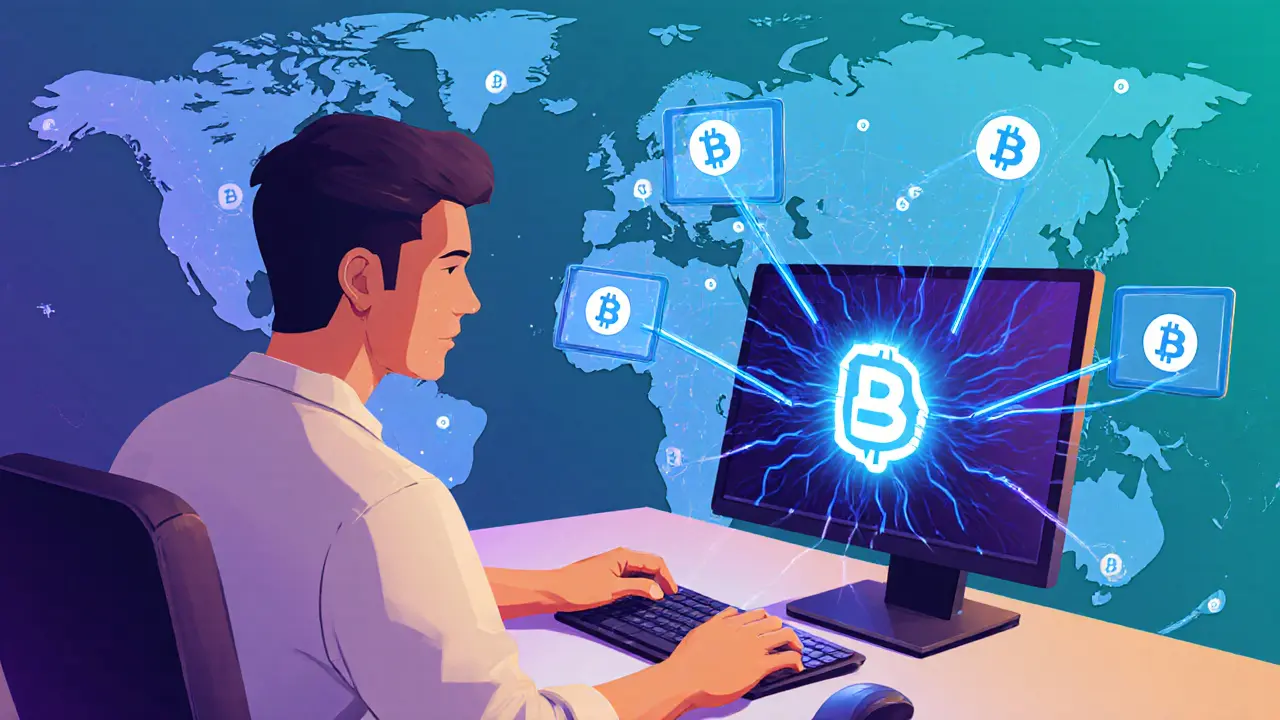Decentralization in Crypto: Why It Matters
When talking about decentralization, the shift from central control to distributed networks that let anyone participate without a single authority. Also known as distributed ledger governance, it fuels the modern crypto ecosystem. Blockchain, a tamper‑proof data structure that records transactions across many nodes is the core technology that makes decentralization possible. Decentralized finance (DeFi), financial services built on smart contracts that run without banks is a direct result of this trust‑less setup.
Decentralization encompasses blockchain, because a blockchain’s consensus rules replace a central ledger keeper. It requires trustless protocols that let strangers transact safely, which is why DeFi platforms can offer lending, swapping, and yield farming without a custodian. At the same time, privacy‑focused non‑KYC exchanges, trading venues that don’t demand identity verification rely on decentralization to protect user anonymity while still providing liquidity. These exchanges illustrate how decentralization enables new business models that sidestep traditional regulations.
One practical side of decentralization shows up in Sybil‑resistant reputation systems, mechanisms that prevent a single actor from creating many fake identities. By attaching economic stakes or cryptographic proofs to each participant, these systems keep decentralized networks honest. This directly influences DeFi protocols, where a bad actor could otherwise drain a liquidity pool. The reputation layer adds another safety net, ensuring that the openness of decentralization doesn’t become a vulnerability.
Regulators are catching up because decentralization erodes the borders that governments traditionally enforce. In places like Kuwait, a total crypto ban attempts to re‑centralize control, while in India the rise of the digital rupee nudges users back toward state‑issued money. The tension between decentralized tech and centralized policy creates a dynamic landscape that every crypto enthusiast should watch. Understanding how decentralization interacts with local laws helps you navigate risks and spot opportunities.
From a user perspective, decentralization means you hold your own keys, decide where to trade, and can earn yields without asking a bank for permission. It also means you bear responsibility for security—lost keys, phishing attacks, and smart‑contract bugs are all part of the equation. That trade‑off is why many readers start with guides on wallet safety, then move to deeper topics like DeFi strategy and privacy trading.
Below you’ll find a hand‑picked collection of articles that explore these themes in depth. Whether you’re curious about the latest airdrop, want a no‑KYC exchange review, or need a quick rundown of blockchain supply‑chain use cases, the posts give concrete steps, real‑world data, and practical tips. Dive in to see how decentralization shapes each corner of the crypto world and what you can do with it today.
Why Running a Blockchain Node Boosts Decentralization
Running a blockchain node spreads the ledger, boosts security, enables voting and rewards, and ensures true decentralization across networks.





